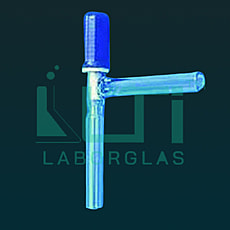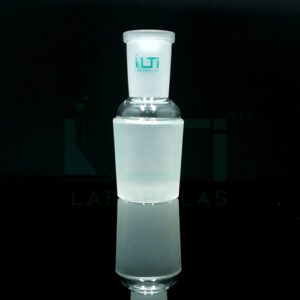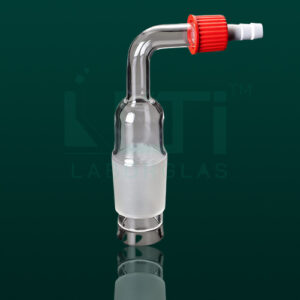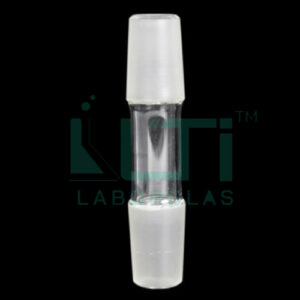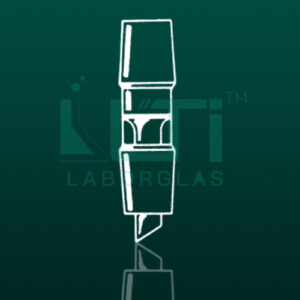- Chemical Resistant
- Rota flow
- Material: Borosilicate glass 3.3
| Part no. | Bore Range mm | Outside Diameter of Stems mm | Pack Qty. |
| 1690-8 | 0-3 | 8 | 10 |
| 1690-10 | 0-6 | 10 | 10 |
| 1690-13 | 0-10 | 13 | 10 |
Here are some common uses for stopcocks with needle valves in a right-angle 90° design with a General Purpose designation:
- Laboratory Glassware:
- Stopcocks with needle valves in a right-angle 90° configuration are fundamental components of laboratory glassware setups, providing precise control over the flow of liquids or gases in various experimental procedures.
- Chemical Synthesis:
- These stopcocks are used in chemical synthesis processes to control the addition of reagents, the flow of reactants, or the collection of reaction products with precision, especially when a right-angle connection is needed.
- Titration Experiments:
- In titration experiments, needle valve stopcocks with a right-angle 90° design are used to control the flow of titrant during the titration process, ensuring accurate and controlled addition.
- Liquid Chromatography (LC):
- These stopcocks can be integrated into liquid chromatography systems to control the flow of mobile phases or eluents during separation processes, especially in systems where a right-angle connection is advantageous.
- Gas Chromatography (GC):
- In gas chromatography setups, needle valve stopcocks with a right-angle 90° design are utilized to control the flow of carrier gases, samples, or other gases within the system.
- Reaction Setups:
- Needle valve stopcocks with a right-angle configuration are used in experimental setups where precise control of the addition or mixing of reactants is required, especially in setups with tubing or connections at right angles.
- Vacuum Applications:
- Right-angle needle valve stopcocks can be used in vacuum systems to control the flow of gases or liquids under reduced pressure, especially when a right-angle connection is needed.
- Analytical Chemistry:
- In analytical chemistry experiments, these stopcocks are used to control the flow of solutions during sample preparation or analysis, particularly when a right-angle connection is preferred.
- Quality Control Processes:
- Stopcocks with needle valves in a right-angle 90° configuration are used in quality control procedures to precisely control the addition of standards, reagents, or solutions during analytical testing.
- Standardization of Glassware:
- Compliance with industry standards ensures that the stopcocks meet specific quality and safety criteria, contributing to the standardization of laboratory glassware.
- Educational Demonstrations:
- These stopcocks are used in educational settings to demonstrate principles of fluid control and precision in laboratory experiments, especially in setups involving right-angle connections.

